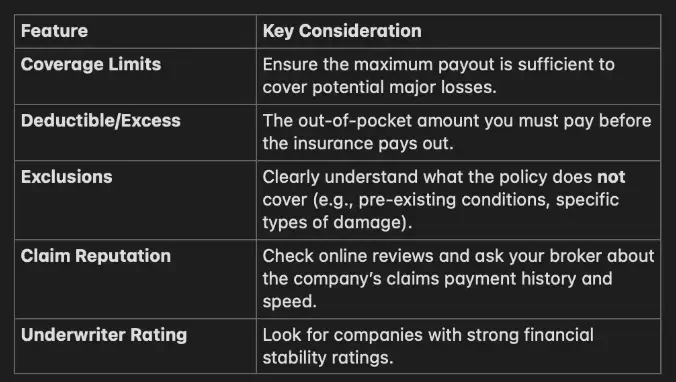A product recall is one of the most disruptive events a business can face. Beyond the immediate task of removing unsafe or defective items from shelves, recalls affect every part of an organization from supply chain management and regulatory responsibilities to customer communication and long-term brand impact. In today’s increasingly competitive and transparent market, a recall can quickly escalate into a full-blown crisis if not handled correctly. That is why companies must understand the recall process, invest in risk assessment, and implement solid prevention strategies. With careful preparation, enhanced quality control systems, and the right insurance coverage, businesses can navigate recalls with confidence and protect consumer safety as well as their reputation.
What is a Product Recall? More Than Just a Logistical Challenge
A product recall is a formal request to return, repair, replace, or remove a product that poses safety risks or does not comply with regulatory standards. Contrary to common belief, recalls are not merely logistical operations. They involve regulatory compliance, fast decision-making, cross-department coordination, and transparent communication with stakeholders.
Businesses often initiate recalls voluntarily, although government agencies can mandate them when public safety is at risk. Whether voluntary or mandatory, recalls require companies to demonstrate accountability, reinforce consumer safety, and take swift corrective action to prevent further harm.

The Anatomy of a Recall: Key Stages of the Process
A successful recall follows a structured, well-defined process. Understanding each stage ensures businesses act quickly and accurately:
- Identification of the issue - Problems may emerge through customer complaints, internal quality checks, or regulatory inspections.
- Risk assessment - Companies must gauge the severity of the issue, including potential harm to consumers.
- Regulatory reporting - Depending on industry rules, organizations may need to notify authorities immediately.
- Recall strategy development - This involves creating messaging, communication channels, and logistics for retrieving products.
- Communication with the public - Clear instructions must be provided through media releases, websites, or direct notifications.
- Execution of corrective action - The company repairs, replaces, or removes affected items from the market.
- Post-recall evaluation - Reviewing the recall improves future crisis management and internal processes.
A recall’s success depends on transparency, speed, and effective collaboration across departments.
The True Cost of a Recall: Uncovering the Hidden Financial Dangers


Building Your Defense: How to Proactively Prepare for a Recall
Preparation is the strongest defense against recall-related damage. Businesses that plan ahead respond faster and minimize risk.
Establish a Cross-Functional Recall Team
A dedicated team should include representatives from quality assurance, legal, logistics, communications, customer service, and senior management. This team should be responsible for overseeing recall procedures, communicating with regulators, and ensuring that all corrective actions are carried out smoothly. A well-coordinated team enhances crisis management efficiency and reduces internal confusion.
Implement Robust Product Traceability Systems
Effective product traceability enables organizations to identify affected batches quickly. Technologies such as barcode tracking, RFID systems, and integrated digital databases make it easy to locate where products were distributed. Strong traceability not only accelerates recall execution but also improves supply chain management as a whole.
Create and Test a Written Recall Plan
A written recall plan is essential for guiding your team through the process. This document should outline communication templates, logistics arrangements, decision-making roles, and reporting procedures. Regular simulations or recall drills ensure employees understand their responsibilities and can act quickly during a real event. Testing also helps companies evaluate weaknesses and strengthen their quality control measures.

Mitigating the Financial Fallout with Product Recall Insurance
Even with the best preventive strategies, recalls can still occur particularly for industries handling high-risk products such as food, electronics, automotive goods, or medical devices. Product recall insurance helps businesses absorb the financial shock by covering expenses such as:
- Retrieval and disposal costs
- Customer notification and communication
- Replacement or repair costs
- Consultant fees related to crisis response
- Loss of profits during the recall period
This type of insurance acts as a financial safeguard, supporting companies as they work to restore operations and protect their reputation. Combined with strong product liability coverage, it forms a comprehensive safety net for modern businesses.
Frequently Asked Questions (FAQs)
Is a product recall always mandatory?
No. Many recalls are voluntary and initiated by companies after identifying defects or safety hazards. However, regulatory agencies can mandate a recall if a company fails to act or if the risk to public safety is high.
What is the difference between a product recall and a market withdrawal?
A product recall involves removing items that may pose safety risks or violate regulations. A market withdrawal, on the other hand, is used for minor issues that do not pose safety threats such as labeling errors that do not affect consumer health.
Who pays for a recall if a supplier's component was the cause?
Ultimately, the brand selling the product is responsible for initiating the recall. However, the company may seek reimbursement from the supplier based on contract terms, warranty clauses, or liability agreements.
How can a company protect its brand reputation during a recall?
Transparency, honesty, and fast action are key. Communicating clearly with customers and regulators, implementing corrective action quickly, and demonstrating strong safety commitments help maintain trust even during a crisis.

